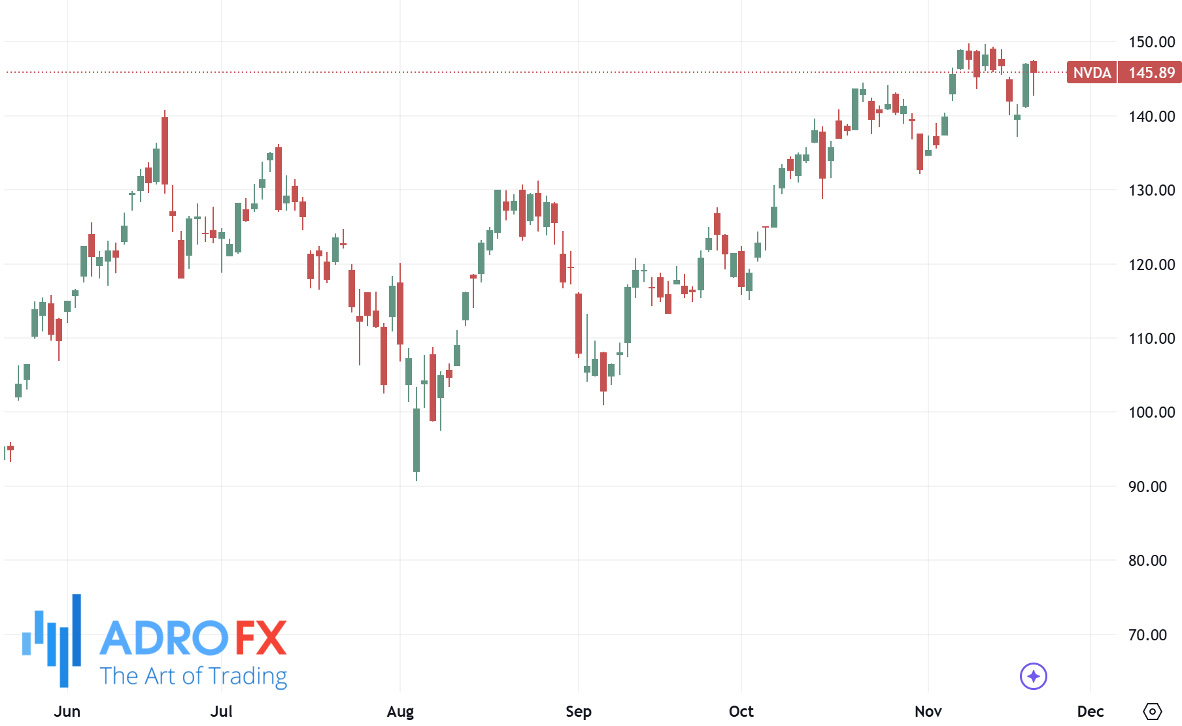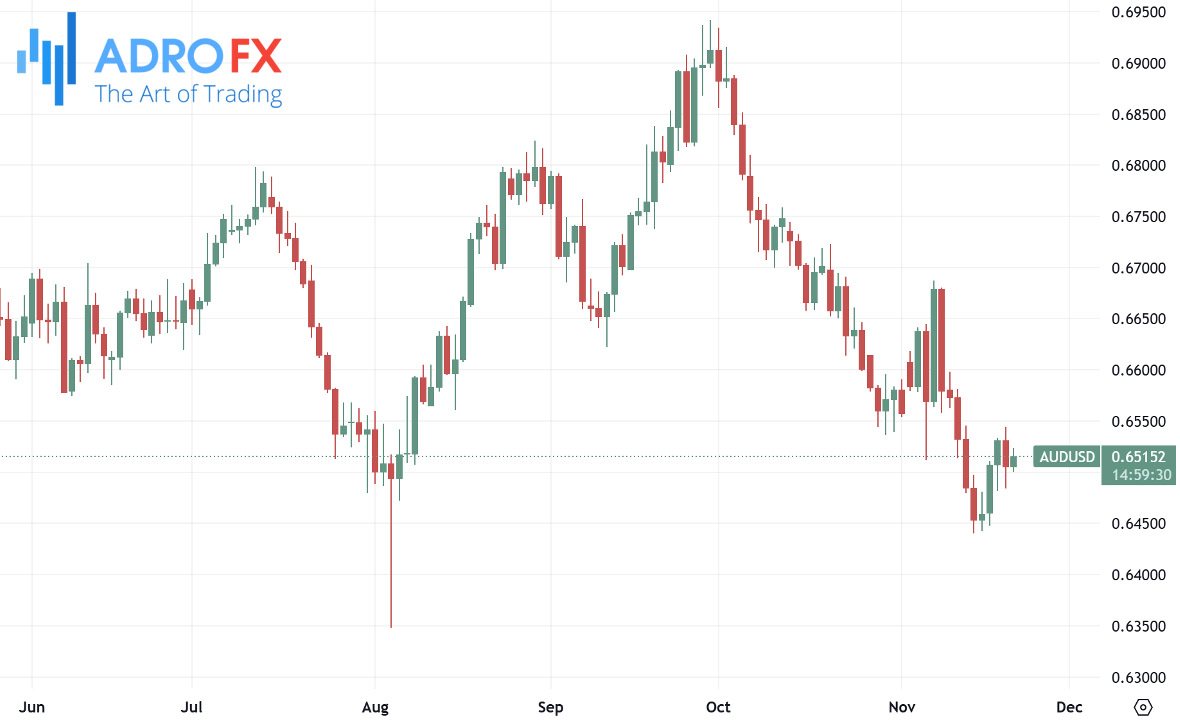Market Movements Amid Key Earnings, Central Bank Outlooks, and Geopolitical Risks | Daily Market Analysis

Key events:
- USA - Initial Jobless Claims
- USA - Philadelphia Fed Manufacturing Index (Nov)
- USA - Existing Home Sales (Oct)
The Dow Jones Industrial Average rebounded from early losses on Wednesday, climbing 139 points or 0.3% to close higher. In contrast, the S&P 500 ended the session nearly unchanged with a minor 0.01% decline, while the NASDAQ Composite dipped 0.1% as uncertainty in the technology sector weighed on investor sentiment. The cautious tone reflected anticipation ahead of Nvidia’s quarterly earnings report (as the company announced its earnings after the market close), which many consider a critical indicator for the artificial intelligence (AI) industry.

Nvidia Corporation (NASDAQ: NVDA) expectations in its third-quarter earnings report, delivering stronger-than-anticipated results for both revenue and adjusted earnings per share, along with an optimistic forecast for the upcoming quarter. This performance underscores Nvidia’s continued robust growth fueled by sustained demand for its cutting-edge AI chips.
Despite the strong report, Nvidia’s stock declined by 2% in after-hours trading, reflecting potential profit-taking or market caution.
For the current quarter, Nvidia projected sales of approximately $37.5 billion, with a margin of ±2%. This guidance exceeded analyst estimates of $37.08 billion, further highlighting the company’s confidence in its AI-driven business momentum.
The report reaffirms Nvidia’s leadership in the AI chip sector, where its products are in high demand as industries increasingly adopt AI technologies to enhance operations and innovate processes.

Large-cap tech stocks reflected a mix of caution and optimism. Alphabet Inc. (NASDAQ: GOOGL) and Microsoft Corporation (NASDAQ: MSFT) led declines, reflecting investor hesitancy, while other tech names edged higher on hopes of positive Nvidia numbers. Meanwhile, Netflix Inc. (NASDAQ: NFLX) stood out, announcing a record-breaking global viewership of 108 million for a recent boxing event featuring Jake Paul and Mike Tyson, boosting its stock amid broader tech-sector jitters.
The Japanese Yen extended its gains on Thursday, with the USD/JPY pair slipping to the mid-154.00s during European trading hours. This movement came as Bank of Japan Governor Kazuo Ueda signaled flexibility in monetary policy, leaving the door open for a potential rate hike as early as next month. The possibility of a policy shift, coupled with escalating geopolitical risks from the Russia-Ukraine conflict, supported the yen’s safe-haven appeal.

Market participants are split on the likelihood of a 25-basis-point hike at the BoJ’s December meeting, with many pricing in equal chances of either a hike or no change. Adding to the complex backdrop, Japan's Economic Revitalization Minister Akazawa unveiled a proposed economic package of ¥21.9 trillion, aimed at sustaining growth amid global uncertainties.
The Australian Dollar clawed back some of its recent losses on Thursday, buoyed by the Reserve Bank of Australia's optimistic outlook on inflation control. Minutes from the RBA’s November meeting emphasized vigilance against persistent inflation, with the board leaving the door open for potential rate hikes. Despite this, the AUD/USD pair remains vulnerable to downside pressures as geopolitical risks bolster demand for the US Dollar, a traditional safe haven.

The USD/CHF pair hovered near the 0.8825 level, retreating slightly after Wednesday’s gains. The decline followed reports that Russian President Vladimir Putin had approved changes to the country’s nuclear doctrine, a move that briefly unsettled markets. However, reassurances from Russian and US officials mitigated fears of escalation, helping stabilize risk sentiment.
The broader risk-on tone in equity markets limited the downside for the USD/CHF pair, although demand for the Swiss Franc as a safe-haven currency remains a key factor. Traders are cautiously monitoring developments as geopolitical risks remain unresolved.

The EUR/USD pair edged higher to trade near 1.0550 in Asian hours on Thursday, recovering from the previous session’s losses. Comments from European Central Bank Governing Council member Yannis Stournaras suggested that the Eurozone is nearing its 2% inflation target, reinforcing hopes of monetary stability. However, ongoing geopolitical tensions and policy uncertainties pose risks to the region’s economic resilience. With markets pricing in a 25-basis-point rate cut by the ECB next month, the Euro remains under pressure.

Investors are now shifting their attention to key US economic data scheduled for release later on Thursday. Reports on weekly initial jobless claims, the Philadelphia Fed Manufacturing Index, and existing home sales could provide further insights into the health of the economy and influence market sentiment.
As global markets navigate a landscape shaped by earnings, central bank policies, and geopolitical risks, traders are bracing for potential volatility. Keeping a close eye on these developments will be crucial for understanding the trajectory of equities, currencies, and commodities in the coming weeks.









